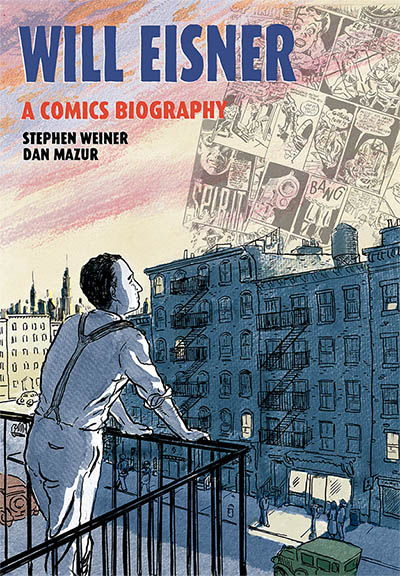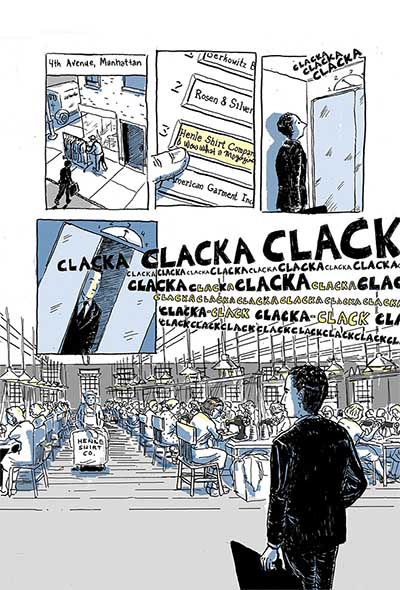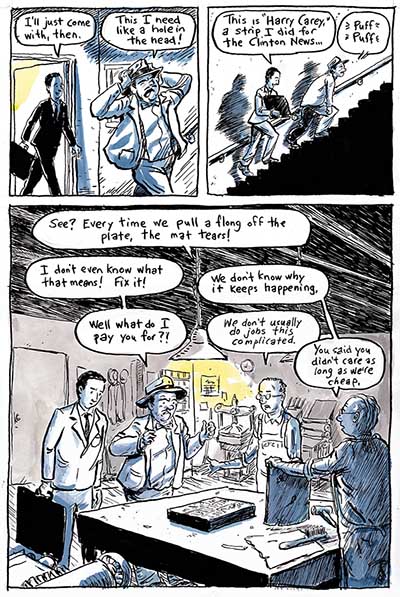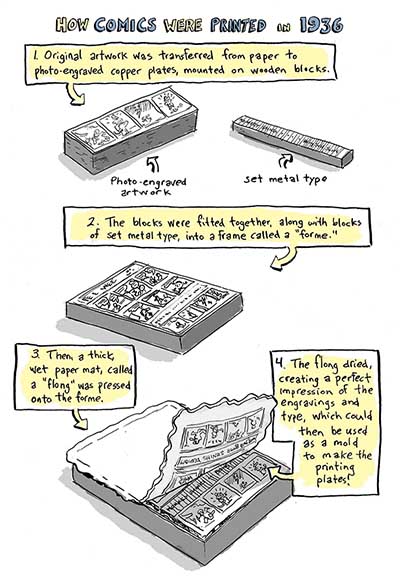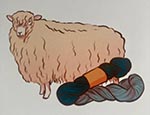There is a page, midway through this excellent biography, that documents how comics were printed in 1936. It shows how artwork was transferred from paper to copper plates, then mounted on blocks, before being fit together into a frame. That sort of information may seem dry and uninteresting to people who don’t care about comics but, for everyone else, it is one of many delightful pieces of information that come together for a wonderful history of the medium, as well as one of the giants who helped give birth to it.
The shadow of Will Eisner looms large over anyone who has ever read a comic or decided to try and make one. It makes this graphic biography almost seem inevitable, although one is quickly compelled to wonder why something like this wasn’t commissioned before. Perhaps all it needed was great collaborators, and it may be hard to find anyone who can question Dan Mazur’s credentials after Comics: A Global History, which he co-wrote with Alexander Danner. His collaborator, Stephen Weiner, has also spent years chronicling the evolution of comics as an art form. Together, they bring a critical, respectful spirit of inquiry to this personal history of the only man after which the industry’s most respected award is named.
William Erwin Eisner passed away in 2005, and his story has been told by many since then. This attempt also closes with a two-page bibliography that ought to satisfy anyone interested in finding out more. And yet, there is an argument to be made that a graphic biography was necessary, if only to highlight the enormity of what Eisner accomplished. It’s sometimes difficult to accept how little the medium was respected when he began, and how much he did to change the perspective of publishers and a growing audience. When Eisner began illustrating stories in the 1930s, it was because of limited career opportunities. The form he chose was looked down upon, and no one could have predicted the rise of a billion-dollar industry built on the backs of comics. He persisted though, and by the time A Contract with God was published in 1978, he had arguably done more to extend the medium’s possibilities than anyone has since, despite the innovative techniques we have all grown to accept and expect since.
Weiner and Mazur tell Eisner’s story in a linear manner but pay tribute in subtle ways. The panels and sepia tones evoke the style of his masked crime-fighter, The Spirit, as well as the gritty streets of New York City that Eisner spent much of his life in. Another thing that works is the tacit acknowledgement that the reader wants to know more, not just about Eisner, but the social and economical forces that shaped his story. It’s all here, from his early years of impoverishment in Brooklyn during the Great Depression, to his partnership with Jerry Iger, the skepticism with which his family treated his work, even the antisemitism that moulded his view of the world.
Jeff Smith’s afterword touchingly shares how Eisner spent his life encouraging young cartoonists, and there’s also a helpful list of artists and writers who worded at the Eisner-Iger studio, along with people who worked on The Spirit, as well as the awards and distinctions given to Eisner during his lifetime.
At a time when immigrants are being vilified, this powerful biography serves as a reminder that Eisner’s work laid the foundation for a platform that has wholeheartedly embraced outsiders, offering them space to tell their stories, while continuing to make them feel at home.
Stephen Weiner & Dan Mazur (W), Dan Mazur (A) • NBM Publishing, $29.99
Review by Lindsay Pereira





